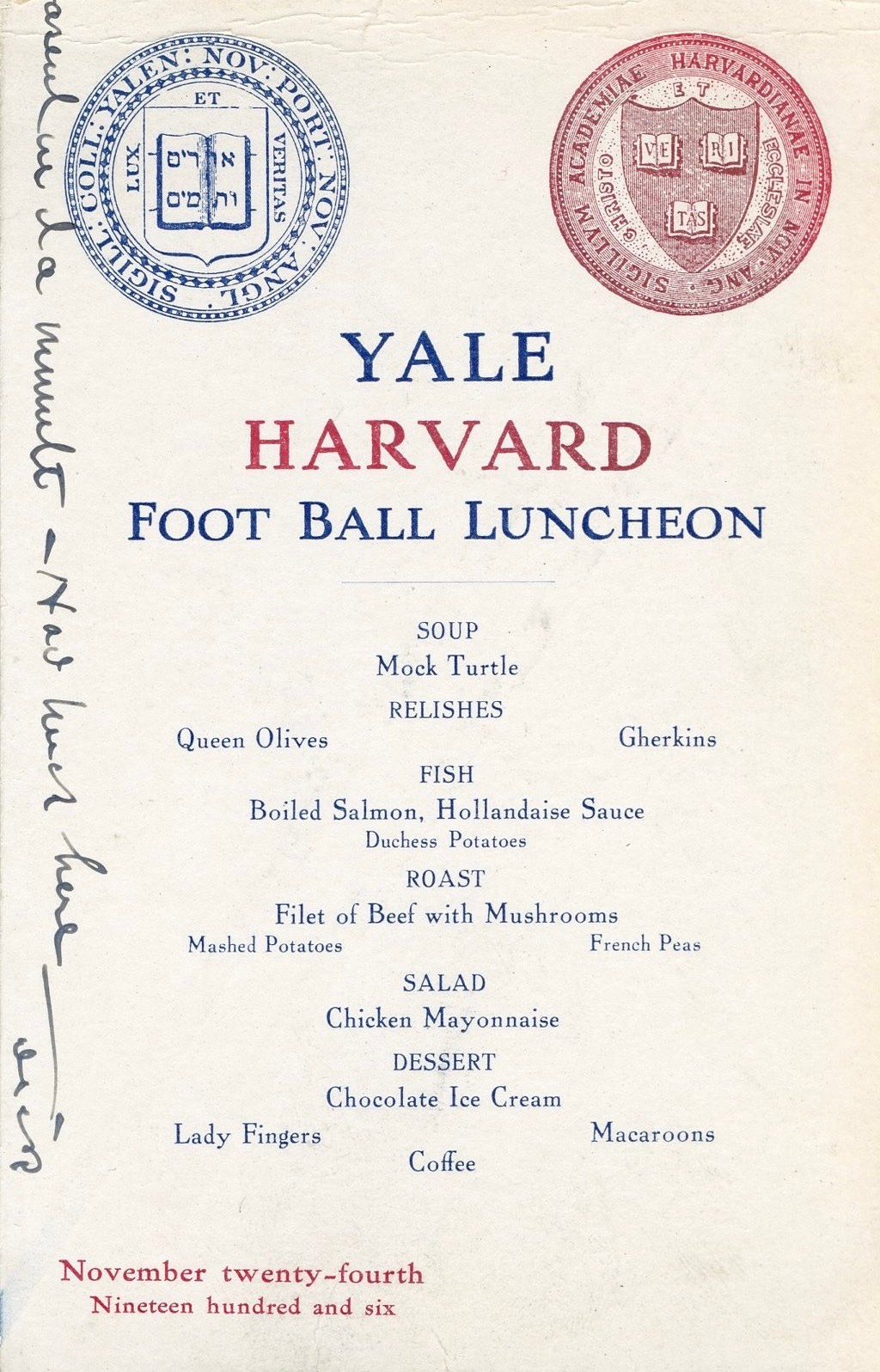Today's Tidbit... Old and New Football: Harvard-Yale of 1906
The 1906 Harvard-Yale game included numerous elements of old-school football, but the game's sole touchdown came following two plays enabled by the 1906 rule changes. One involved an onside kick from scrimmage and the other a forward pass.
Both teams entered the game undefeated. Yale was 9-0-1, having tied Princeton 0-0 the week before, while Harvard was 10-0, partly due to their refusing to play Princeton between 1897 and 1910.
As always, the game attracted a capacity crowd to Yale Field. The crowd was immortalized the following day when the New York Times published the first known reference to fans enjoying a pre-game football picnic, a practice known as tailgating since the 1950s.
The train crowd came principally about noon. ….Each trainload as it reached the station quickly hurried away down Church Street to the campus in a mad rush to get cars to make the journey to the field. …Few were able to get luncheon on the way, and these gazed with envious eyes as they neared the field at small parties of automobilists eating tempting viands that had been brought in hampers spread out in picnic fashion on a table cloth laid upon the ground.
‘A Football-Mad Throng,’ New York Times, November 25, 1906.
Other fans enjoyed the Foot Ball Luncheon at the Yale Dining Hall, at least according to the following foldover menu/postcard shown below.

During the game itself, Harvard played conservatively, with all but the earliest first-half plays occurring on the Harvard side of the center line. However, Harvard's defense held until the end of the first half when Yale punted from Harvard's 39-yard line and recovered the kick at the 22. (A 1906 rule allowed the punting team to recover the ball after it crossed the line of scrimmage.) Then on third and twelve from the 20-yard line, Yale's right halfback, Paul Veeder, dropped back as if to attempt a drop-kicked field goal, but after receiving the snap, he dodged two tacklers as he ran toward the right sideline, then stopped and threw the ball toward the goal line. Yale's right end, Alcott, caught the ball and was tackled at the 4-yard line on what some consider the most important forward pass of 1906. Yale scored a touchdown two plays later to earn four points, after which Veeder drop-kicked the conversion for an additional pair of points.
Down 6-0, as the second half started, Harvard chose to play the old-school field position game, punting on first down the first eight times they had the ball (including when Yale fumbled a punt and Harvard recovered), hoping Yale would make a mistake and give Harvard the ball in favorable field position. Late in the game, Harvard got the ball inside Yale's 35-yard line but fumbled after a few plays and only did not run another offensive play in the game.

Yale, which took advantage of football's 20th-century rules, earned the victory in a hard-fought game, while Harvard's conservatism and reliance on 19th-century strategies lost to Yale for the fifth straight time.
Some retroactively named Yale the sole national champ down the road, while others gave them a shared title with Princeton. Most important, two rule changes intended to open up the game played decisive roles in a game that otherwise reflected the traditional game. Several decades and much more evidence of the forward pass’ value were needed before it revolutionized the game.
Football Archaeology is reader-supported. Click here to buy one of my books or otherwise support the site.



